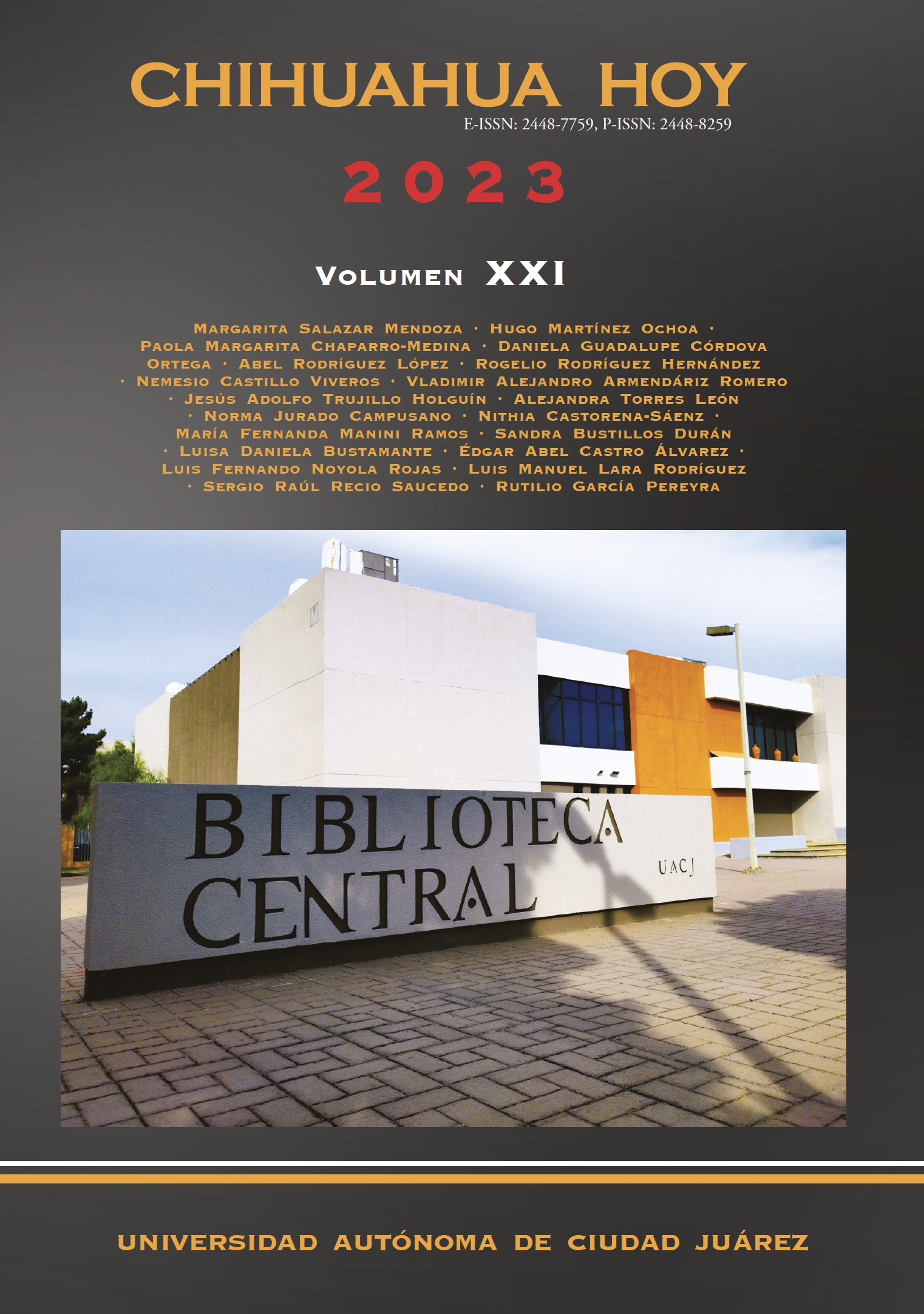Desamor, catástrofe y maravilla en “La revelación del agua”
DOI:
https://doi.org/10.20983/chihuahuahoy.2023.21.12Palabras clave:
amores desgraciados, desierto, neorrealista, Parral, relato, trombaResumen
En este texto se analiza La revelación del agua, novela de la autora chihuahuense Martha Estela Torres Torres. Para abordar esta obra se decidió realizar un análisis especializado de los aspectos históricos y estilísticos que contiene, que se basa en las nociones retóricas clásicas de Inventio, Dispositio y Elocutio, a las que se suman algunas consideraciones del contexto. Así, se ofrece una interpretación que parte de los elementos intrínsecos principales de la obra; que procura atender la tradición literaria y cultural en la que se produce y, desde una mirada académica, valora sus características, los temas que trata y otros aciertos narrativos. Se concluye que la novela reanima elementos de lo real maravilloso, aunque su discurso mesurado, su mirada abarcadora de las distintas explicaciones sociales y la estrategia periodística que configura su amplia tercera parte, la convierten en una obra neorrealista.
Citas
Bachelard, G. (2000). La poética del espacio. Fondo de Cultura Económica.
Daniélou, A. (2012). Mientras los dioses juegan. Atalanta.
De Alarcón, P. A. (1875). El escándalo. Medina y Navarro. https://www.cervantesvirtual.com/obra-visor/el-escandalo--0/html/feddc016-82b1-11df-acc7-002185ce6064_2.html
De Unamuno, M. (1921). La tía Tula. Renacimiento. https://www.cervantesvirtual.com/nd/ark:/59851/bmcmw4h4
Gallego Basteri, L. M. (1987). Ahora te puedes marchar [canción]. En Soy como quiero ser. Grabadora. https://youtu.be/qm88-bWUP2g?si=5oMuHwl3U81p_WXK
García Márquez, G. (1985). El amor en los tiempos del cólera. Oveja Negra.
Hebreo, L. (1985). Diálogos de amor. Porrúa.
Llarena, A. (1996). Claves para una discusión: el “Realismo mágico” y “Lo real maravilloso americano”. Inti, Revista de Literatura Hispánica y Trasatlántica, 1(43), 21-44.
Martínez Zamora, E. (2022). Neorretórica en el siglo XX: la prerrogativa de Pozuelo Yvancos sobre un modelo de retórica textual. Cartaphilus, 20, 218-245.
Montemayor, C. (1999). La tormenta y otras historias. Universidad Nacional Autónoma de México.
Piccolomini, E. S. (2006). Cintia. Historia de dos amantes (trad.: J. M. Ruiz Vila). Akal.
Ruesch, H. (2005). El país de las sombras largas. Ediciones del Viento.
Talavera Trejo, M. (2000). Mano dura. En Teatro de Frontera 4.
Descargas
Publicado
Cómo citar
Número
Sección
Licencia
Derechos de autor 2023 Luis Eduardo Ibáñez Hernández

Esta obra está bajo una licencia internacional Creative Commons Atribución-NoComercial-CompartirIgual 4.0.
Todos los contenidos de la edición electrónica de la revista se distribuyen bajo una licencia de uso y distribución “Creative Commons Reconocimiento-No Comercial-Compartir Igual 4.0 Internacional” (CC-BY-NC-SA). Puede consultar desde aquí la versión informativa de la licencia.
El o los autores conservan sus derechos de autor y garantizan a la revista el derecho de primera publicación de su obra.







